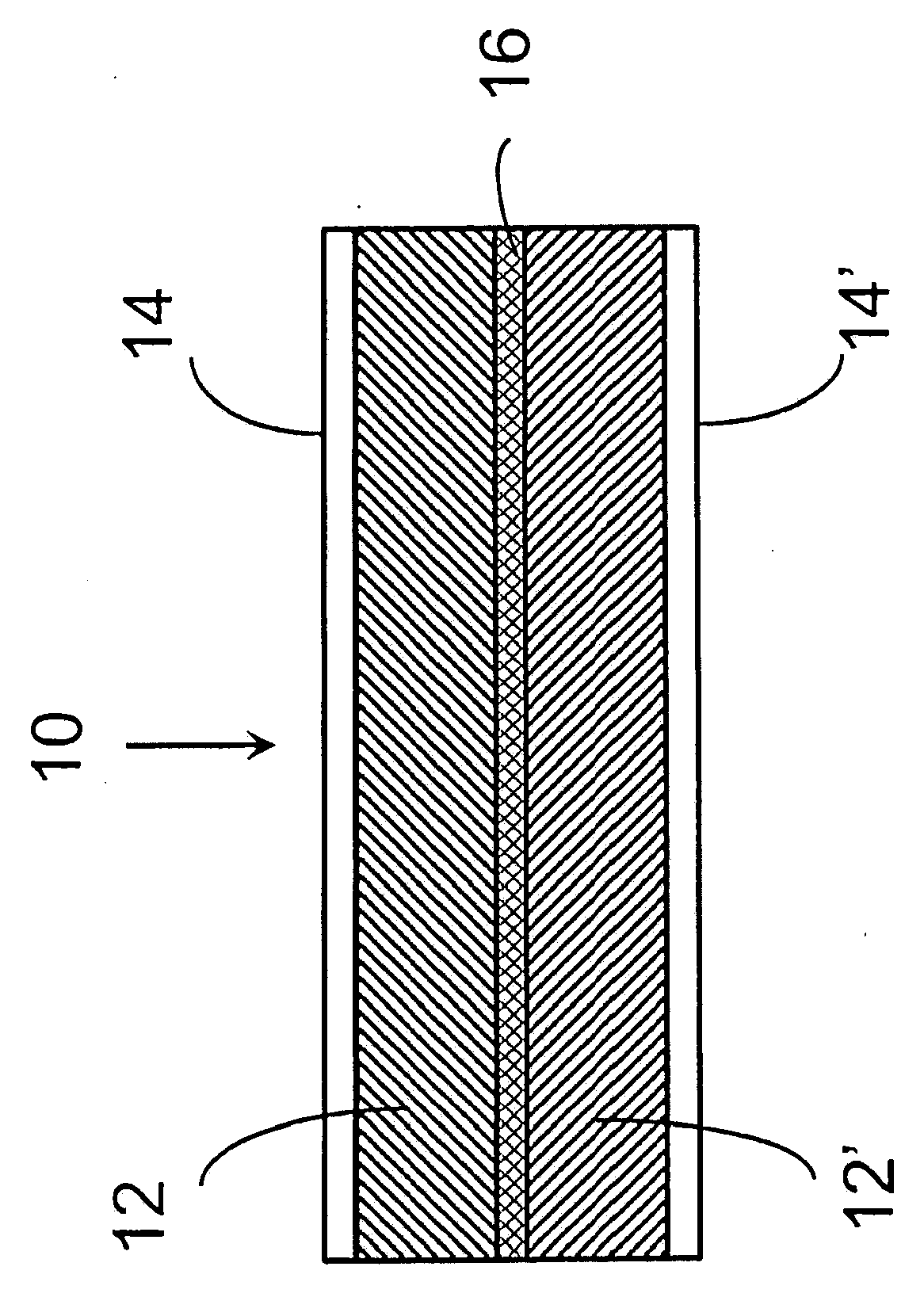Electrolyte compositions, methods of making and battery devices formed there from
A technology of electrolyte and composition, applied in the field of electrolyte composition, can solve problems such as limited usefulness application
- Summary
- Abstract
- Description
- Claims
- Application Information
AI Technical Summary
Problems solved by technology
Method used
Image
Examples
Embodiment approach
[0284] Table 12
[0285]
[0286] Another preferred exemplary embodiment includes a phosphonium ionic liquid composition consisting of the combination of cations and anions shown in Table 13 below:
[0287] Table 13
[0288]
[0289] In some embodiments, further examples of suitable phosphonium ionic liquid compositions include, but are not limited to: di-n-propylethylmethylphosphonium bis-(trifluoromethylsulfonyl)imide; n-butyl-n-propyl phenylethylmethylphosphonium bis-(trifluoromethylsulfonyl)imide; n-hexyl n-butylethylphosphonium bis-(trifluoromethylsulfonyl)imide, etc.
[0290] Illustrative examples of suitable phosphonium ionic liquid compositions further include, but are not limited to: 1-ethyl-1-methylphosphonium cyclopentane bis-(trifluoromethylsulfonyl)imide; n-propylmethylsulfonyl)imide; phosphonium phosphonium bis-(trifluoromethylsulfonyl)imide; n-butylmethylphosphonium phosphonium bis-(trifluoromethylsulfonyl)imide; n-hexylmethylphosphonium cyclopentane al...
Embodiment 1
[0455] Phosphonium ionic liquids were prepared. AgSO 3 CF 3 Add to a 50ml round bottom (Rb) flask and assemble to a 3cm swivel frit. Empty the flask and place it in the glove box. In the glove box, di-n-propylethylmethylphosphonium iodide was added, and the flask was reassembled, placed in the vacuum line, evacuated, and vacuumed into anhydrous THF. The flask was allowed to warm to room temperature, then heated to 40 °C for 2 hours. This resulted in the formation of a pale green beaded solid. The solid was removed by filtration. This produced a pearly milky white solution. Volatile material was removed under high vacuum by heating using a 30°C hot water bath. This gave a yield of 0.470 g of white crystalline material. The material was subjected to thermogravimetric analysis (TGA), and the results are shown in Figure 7 middle.
Embodiment 2
[0457] Further phosphonium ionic liquids were prepared. Add di-n-propylethylmethylphosphonium iodide to a 100 ml flask of Rb in the glove box, then remove and dissolve in 50 ml of DI H 2 O middle. Add AgO 2 CCF 3 To this solution, a yellow bead-like precipitate was produced immediately. After stirring for 2 hours, AgI was removed by filtration and washed with 5 ml of DI H 2 O wash the filter cake 3 times. The bulk water was removed by rotary evaporator. This produces a clear, low viscosity liquid, which is then dried under vacuum with heating and stirring. This results in curing of the material. Gentle heating of the white solid in a warm water bath gave a liquid that appeared to melt just above room temperature. This experiment yielded 0.410 g of material. Figure 8A The reaction scheme is depicted. The material was subjected to thermogravimetric analysis (TGA) and evolved gas analysis (EGA) tests, and the results are shown in Figure 8B with Figure 8C middle.
PUM
| Property | Measurement | Unit |
|---|---|---|
| electrical conductivity | aaaaa | aaaaa |
| thickness | aaaaa | aaaaa |
| thickness | aaaaa | aaaaa |
Abstract
Description
Claims
Application Information
 Login to View More
Login to View More - R&D
- Intellectual Property
- Life Sciences
- Materials
- Tech Scout
- Unparalleled Data Quality
- Higher Quality Content
- 60% Fewer Hallucinations
Browse by: Latest US Patents, China's latest patents, Technical Efficacy Thesaurus, Application Domain, Technology Topic, Popular Technical Reports.
© 2025 PatSnap. All rights reserved.Legal|Privacy policy|Modern Slavery Act Transparency Statement|Sitemap|About US| Contact US: help@patsnap.com



